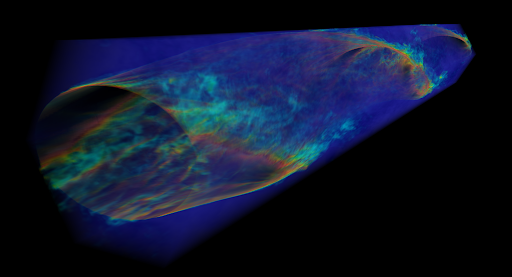Lane Carasik, Ph.D., assistant professor of mechanical and nuclear engineering at VCU Engineering and director of VCU’s High Performance Research Computing core facility, has been awarded the American Society of Mechanical Engineers (ASME) 2020 Lewis F. Moody Award. Carasik is an expert in computational and experimental thermal hydraulics.
He and four co-authors were recognized for their paper on novel heat exchangers for potential use in molten salt clean energy systems, published in the ASME Journal of Fluids Engineering. Dillon Shaver, Ph.D., principal nuclear engineer with the Argonne National Laboratory, was the paper’s lead author.

The award is named for the late Lewis F. Moody, creator of the Moody chart, which predicts flow rate in a circular pipe and has applications in fluid dynamics. Candidates for the award must complete an outstanding original paper useful to the practice of mechanical engineering. Submissions undergo a rigorous selection process, including two committee peer reviews, which can take up to two years.
The paper, “Calculation of Friction Factors and Nusselt Numbers for Twisted Elliptical Tube Heat Exchangers using NEK5000,” was published in 2018, while Carasik was a computational fluid dynamics (CFD) and thermal fluids engineer at nuclear engineering company Kairos Power. The research involved examining novel, twisted elliptical-tube heat exchangers for potential use in molten salt concentrated solar and nuclear power plants.
The investigators predicted turbulent heat transfer and fluid flow behavior in these heat exchangers using NEK5000, a high-fidelity CFD tool, on supercomputer resources provided by the Argonne National Laboratory. They validated the methodology using existing experimental data and used high-fidelity CFD tools to identify future research areas to support deployment of these heat exchangers. In addition, the researchers explored heat exchanger design, and recommended best practices for future modeling and simulations of heat exchangers using CFD tools.
“Through this work, with Dr. Shaver’s leadership, we were able to show the value of using high fidelity CFD tools for industrial applications involving clean energy deployment. This work goes a long way toward supporting future collaborations among industry, the U.S. Department of Energy national laboratories and U.S.-based universities,” Carasik said.
